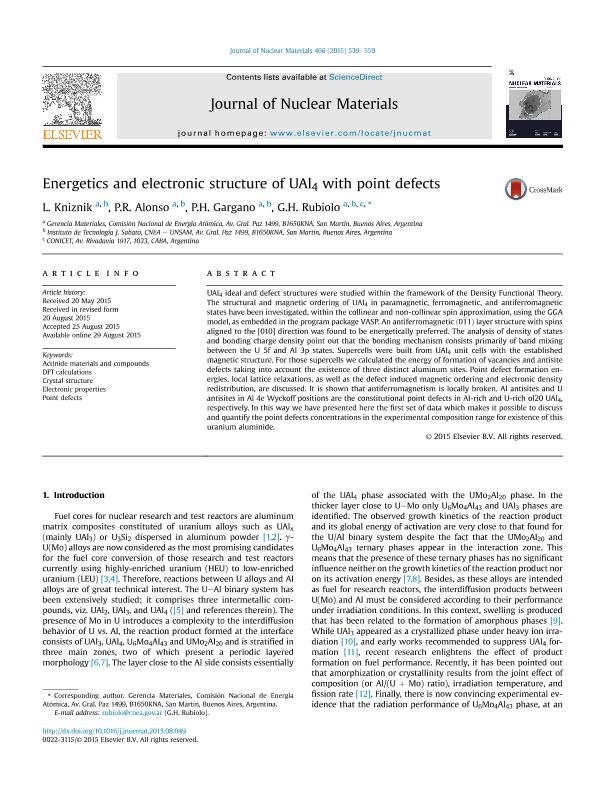Artículo
Energetics and electronic structure of UAl4 with point defects
Fecha de publicación:
08/2015
Editorial:
Elsevier Science
Revista:
Journal of Nuclear Materials
ISSN:
0022-3115
Idioma:
Inglés
Tipo de recurso:
Artículo publicado
Clasificación temática:
Resumen
UAl4 ideal and defect structures were studied within the framework of the Density Functional Theory. The structural and magnetic ordering of UAl4 in paramagnetic, ferromagnetic, and antiferromagnetic states have been investigated, within the collinear and non-collinear spin approximation, using the GGA model, as embedded in the program package VASP. An antiferromagnetic ð011Þ layer structure with spins aligned to the [010] direction was found to be energetically preferred. The analysis of density of states and bonding charge density point out that the bonding mechanism consists primarily of band mixing between the U 5f and Al 3p states. Supercells were built from UAl4 unit cells with the established magnetic structure. For those supercells we calculated the energy of formation of vacancies and antisite defects taking into account the existence of three distinct aluminum sites. Point defect formation energies, local lattice relaxations, as well as the defect induced magnetic ordering and electronic density redistribution, are discussed. It is shown that antiferromagnetism is locally broken. Al antisites and U antisites in Al 4e Wyckoff positions are the constitutional point defects in Al-rich and U-rich oI20 UAl4, respectively. In this way we have presented here the first set of data which makes it possible to discuss and quantify the point defects concentrations in the experimental composition range for existence of this uranium aluminide.
Archivos asociados
Licencia
Identificadores
Colecciones
Articulos(SEDE CENTRAL)
Articulos de SEDE CENTRAL
Articulos de SEDE CENTRAL
Citación
Kniznik, Laura; Alonso, Paula Regina; Gargano, Pablo Hugo; Rubiolo, Gerardo Hector; Energetics and electronic structure of UAl4 with point defects; Elsevier Science; Journal of Nuclear Materials; 466; 8-2015; 539-550
Compartir
Altmétricas




